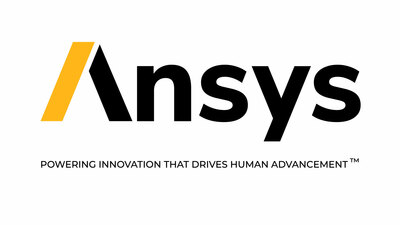Ansys and Rockwell Automation Optimize Industrial Operations with Expanded Digital Twin Connectivity
On September 14, 2021, Ansys (NASDAQ: ANSS) announced an expansion of digital twin connectivity with Rockwell Automation's Studio 5000 Simulation Interface. This collaboration enables engineering teams to leverage simulation-based digital twins, enhancing system design, performance, and predictive maintenance. Users can optimize industrial operations through virtual testing, leading to cost savings and improved throughput. The integration supports both emulated and physical controllers, allowing for real-time performance optimization and predictive maintenance insights, reducing unplanned downtime.
- Expanded connectivity with Rockwell Automation's Studio 5000 enhances digital twin capabilities.
- Enables simulation-based digital twins to improve system design and operational performance.
- Predictive maintenance insights can reduce unplanned downtime and maintenance costs.
- Real-time performance optimization possibilities through integration with physical controllers.
- None.
PITTSBURGH, Sept. 14, 2021 /PRNewswire/ --
Key Highlights
- Rockwell Automation's latest release of Studio 5000 Simulation Interface now connects to Ansys Twin Builder
- The expanded connectivity enables engineering teams to implement simulation-based digital twins, unlocking an extensive range of insights that can improve system design, performance and maintenance
Ansys (NASDAQ: ANSS) and Rockwell Automation are expanding digital twin connectivity to industrial control systems, enabling users to optimize the design, deployment, and performance of industrial operations. By implementing simulation-based digital twins, engineering teams can garner new insights that speed innovation and reduce costs from the design phase to the production phase.
Rockwell Automation's latest release of Studio 5000 Simulation Interface now connects with Ansys Twin Builder, allowing automation and process engineers to leverage simulation-based digital twins. Users can create and test designs in a virtual space, saving the time and money associated with costly physical prototypes. The digital domain can also be used to test process changes before being implemented in the field, which can boost throughput and other performance aspects.
Predictive maintenance represents another significant benefit of simulation-based digital twins. Ansys Twin Builder empowers users with multiphysics analysis to understand how forces like flow rates, mechanical stresses and thermal profiles impact in-field assets. Engineers can use these insights to calculate the remaining life of equipment and plan for maintenance, reducing the chance of costly unplanned downtime.
"By connecting a control system to Ansys Twin Builder, users can simulate complex physical processes and give realistic inputs to the control system," said Julie Robinson, business manager, Rockwell Automation. "This can provide tremendous insights throughout the equipment lifecycle. For example, running a simulation model in parallel to a physical system during production can reveal opportunities to optimize performance in real time."
With the enhanced Studio 5000 Simulation Interface and Ansys Twin Builder, users can connect digital twins to emulated or physical controllers. Connecting to an emulated controller can help users optimize production at the design stage, while connecting to a physical controller allows them to compare optimal equipment performance against actual performance.
"Connecting the digital and physical worlds with Studio 5000 Simulation Interface creates tremendous value for users," said Shane Emswiler, senior vice president of products, Ansys. "It can help them go from conceptual designs to physical equipment faster and at a lower cost. It can provide useful new insights during production. For instance, users can apply what-if scenarios to understand the impact of changes on a process. They can create virtual sensors to estimate values that are otherwise too expensive or not possible to get today, and they can predict outcomes like failures that hurt the bottom line."
To learn more, please see the following Simulation World session: https://www.simulationworld.com/agenda/session/543611.
/ About Ansys
If you've ever seen a rocket launch, flown on an airplane, driven a car, used a computer, touched a mobile device, crossed a bridge or put on wearable technology, chances are you've used a product where Ansys
software played a critical role in its creation. Ansys is the global leader in engineering simulation. Through our strategy of Pervasive Engineering Simulation, we help the world's most innovative companies deliver radically better products to their customers. By offering the best and broadest portfolio of engineering simulation software, we help them solve the most complex design challenges and create products limited only by imagination. Founded in 1970, Ansys is headquartered south of Pittsburgh, Pennsylvania, U.S.A. Visit www.ansys.com for more information.
Ansys and any and all ANSYS, Inc. brand, product, service and feature names, logos and slogans are registered trademarks or trademarks of ANSYS, Inc. or its subsidiaries in the United States or other countries. All other brand, product, service and feature names or trademarks are the property of their respective owners.
/ Contacts | |
Media | Mary Kate Joyce |
724.820.4368 | |
Investors | Kelsey DeBriyn |
724.820.3927 | |
ANSS–C
![]() View original content to download multimedia:https://www.prnewswire.com/news-releases/ansys-and-rockwell-automation-optimize-industrial-operations-with-expanded-digital-twin-connectivity-301375956.html
View original content to download multimedia:https://www.prnewswire.com/news-releases/ansys-and-rockwell-automation-optimize-industrial-operations-with-expanded-digital-twin-connectivity-301375956.html
SOURCE Ansys
FAQ
What is Ansys's recent collaboration with Rockwell Automation about?
How does the Studio 5000 Simulation Interface benefit Ansys users?
What are the financial implications of Ansys's digital twin expansion?
When was the announcement made regarding Ansys and Rockwell Automation's partnership?









